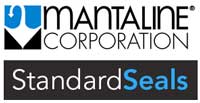Plastic Injection
The Plastic Injection Molding process is both economical and popular for manufacturing a broad range of plastic consumer products. In plastic injection, molding the two die halves that form a molding cavity are held in place by a high pressure hydraulic system. In production, the dies are run at the temperature essential to form the parts: close to the molten temperature of the plastic to be used to form the parts. Pre-heated plastic is injected into the cavity under high pressure, held at temperature and pressure long enough to form the part, then the die halves are opened and the parts extracted.

Plastic Injection molding uses plastic resins in pellet or granular form. Choice of plastic type depends on the kind of product being made, its performance requirements and the overall budget. Examples of compounds used in the plastic injection molding process include polystyrene, polycarbonate, polypropylene, polyethylene, polyamide, polyvinyl chloride, Teflon®, Delrin®, acrylic, ABS and AES.
Plastic injection molded parts are everywhere you look: in automotive and truck applications (dashboards, hoods and fenders), medical devices (IV clips), aerospace (service trays), consumer products (combs and hair curlers), toys (army men), plumbing supplies (elbows and T’s), packaging (wire spools and dairy to store milk cartons) and construction applications (clips and fasteners).



